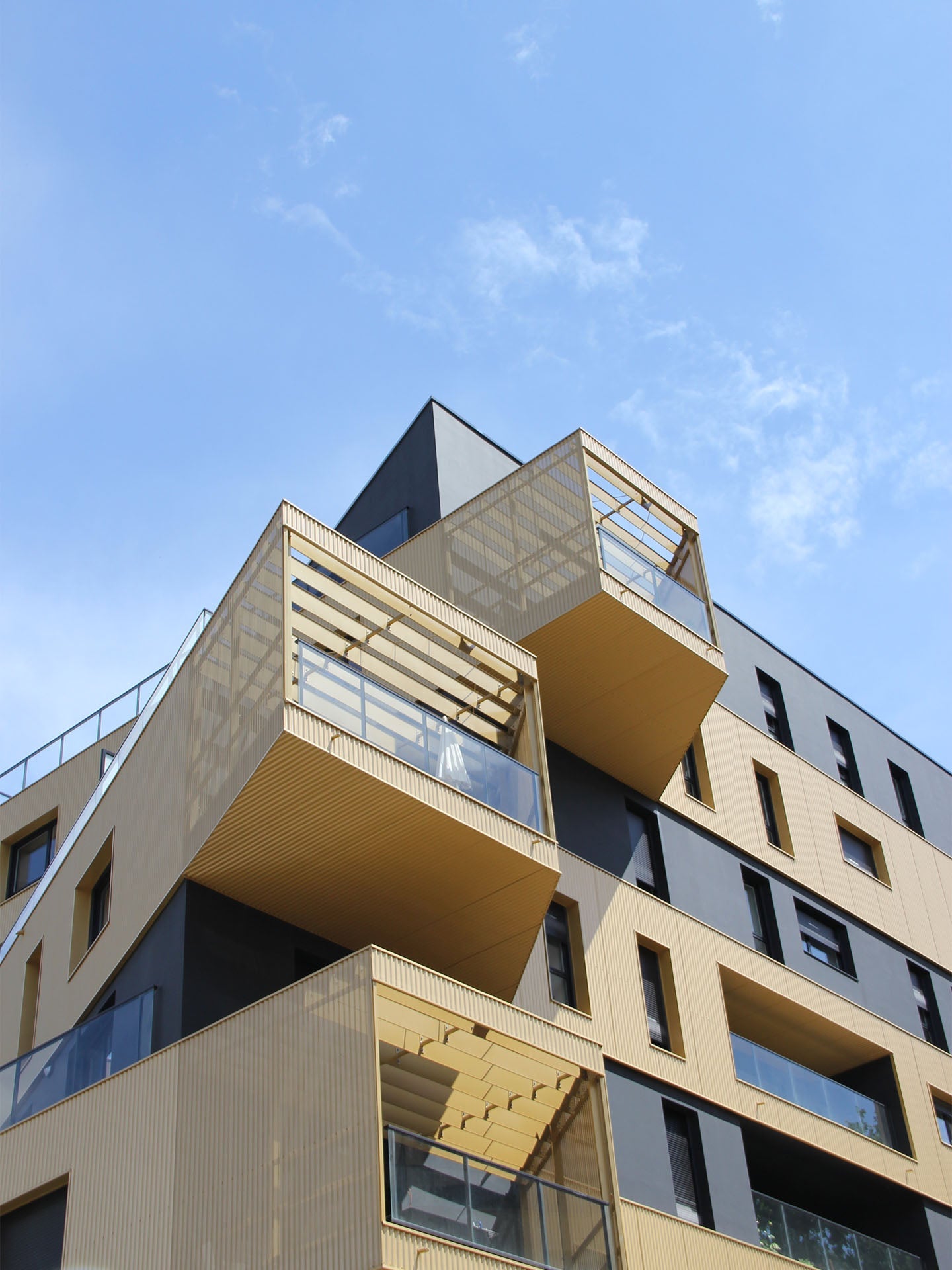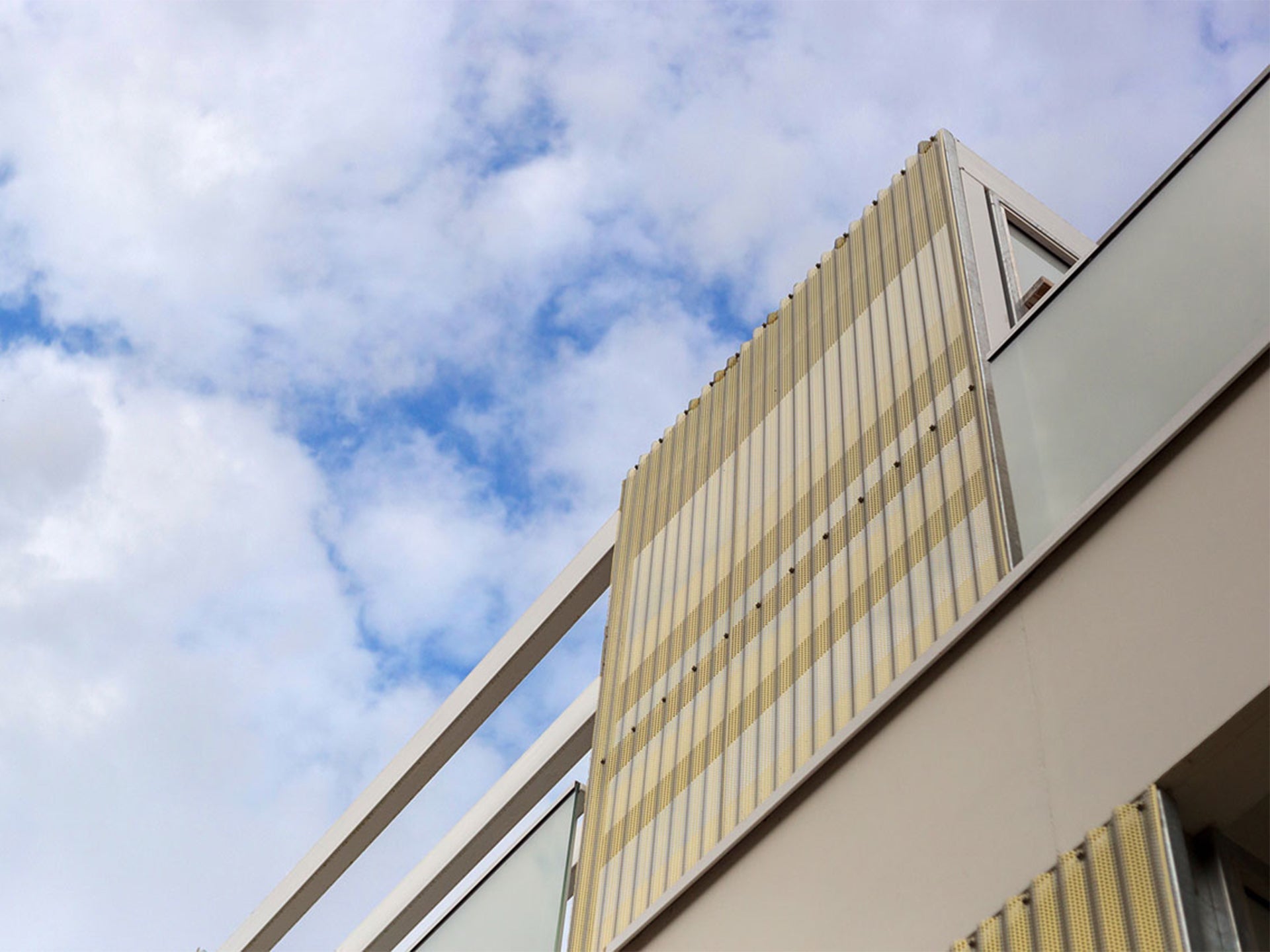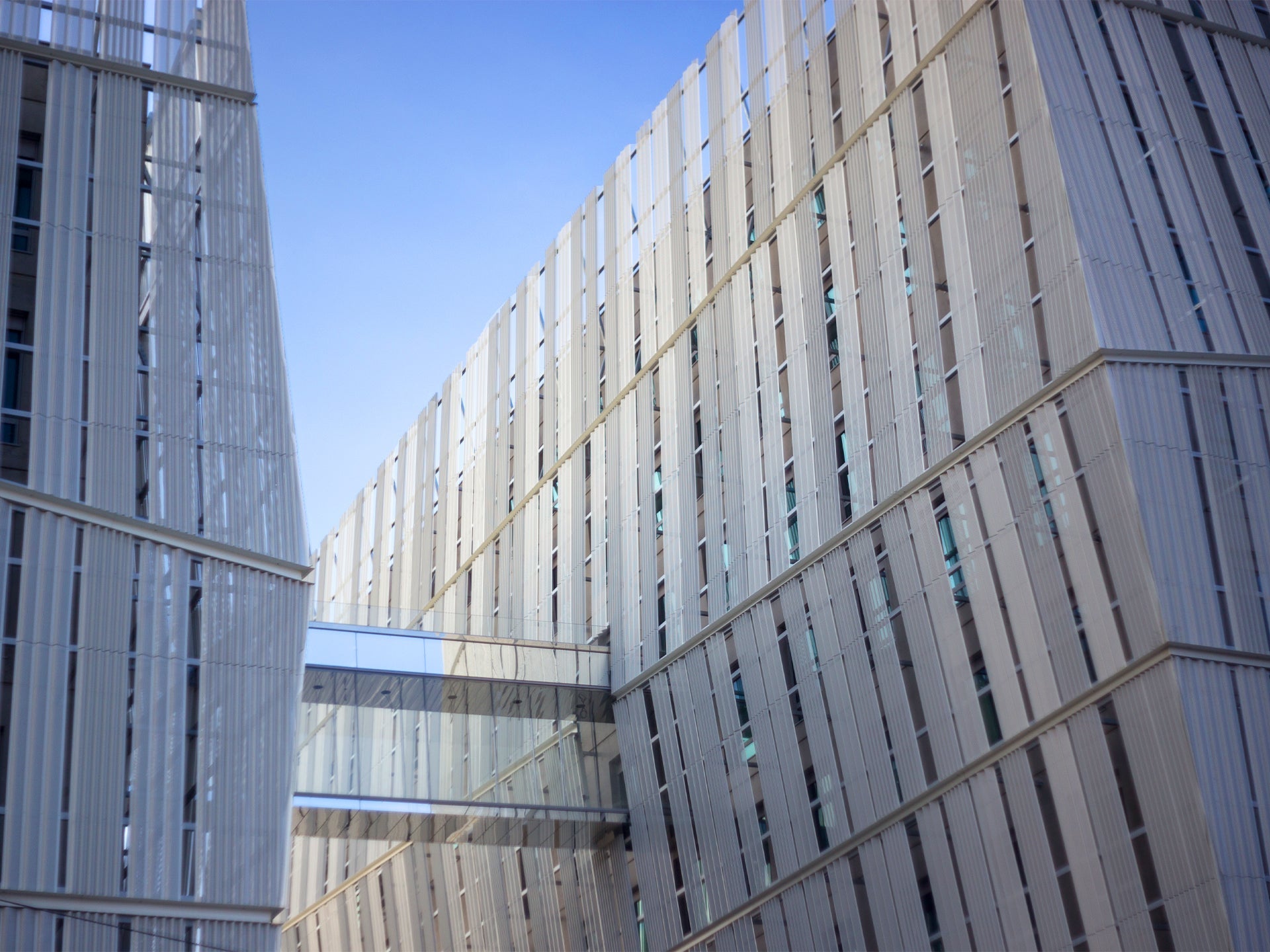Is a brise-soleil a good solution for summer comfort in buildings?
With rising temperatures, energy costs, and the challenges of climate change, solar protection for buildings is becoming a necessity, especially in highly sunny regions. The latest thermal regulations have incorporated the issue of occupant comfort through requirements for natural light and limiting summer temperatures. Architects and occupants are looking for alternative solutions to increase summer comfort in homes and offices without resorting to air conditioning.

Is steel the preferred material for brise-soleils in architecture?
Steel is particularly well-suited for creating brise-soleils. Architects are getting creative in integrating metallic elements into their projects to create plays of shadow and light conducive to summer comfort and privacy. By playing with perforation and folding effects, the alternation between solid and perforated metal, contemporary architecture has found a way to use a simple material to enhance the comfort of their habitats.
Project Highlight: The West Gate office building takes full advantage of the possibilities offered by corrugated brise-soleils to create shaded patios.

The Energy Impact of Brise-Soleils
By reducing the impact of direct solar rays, brise-soleils help decrease the need for air conditioning during the summer. Thus, they contribute to limiting the energy consumption of buildings, promoting better energy efficiency.
Project Highlight: The Equatoria residence uses brise-soleils on terraces to create shaded and private areas for residents.

Customization and Manufacturing of Brise-Soleils
Metal brise-soleils are often custom-made to meet the specific needs of each project. They can be made from perforated sheets or with folds on purlins, offering great flexibility in terms of design and application. To enable every architect, designer, and engineer to develop their bioclimatic concept, Joris Ide has designed a variety of geometries combined with perforation patterns. Whether on new or renovated buildings, the Joris Ide range of brise-soleils allows for play on appearance (shape, color, visibility of fixings, etc.) as well as shading.
Project Highlight: The Safran residence chose perforated sinusoidal sheet brise-soleils to create shaded and private spaces for its residents. The Gold Perla coating allows for a play of shadows and colors with the rest of the building.

Technical Considerations: The Wind Coefficient
It is important to note that due to the mechanical forces generated by the wind, brise-soleils must be designed with a specific wind coefficient of 2 in mind. This requires rigorous technical calculations to ensure their resistance and durability against the elements. For example, if a single skin profile and its support are tested for wind at 80 km/h, the wind resistance needs to be doubled for the same perforated profile used as a brise-soleil (thus 160 km/h).
Project Highlight: The Quatuor – Angers and its facade designed by Ferrier Marchetti Studio and Urbanmakers.